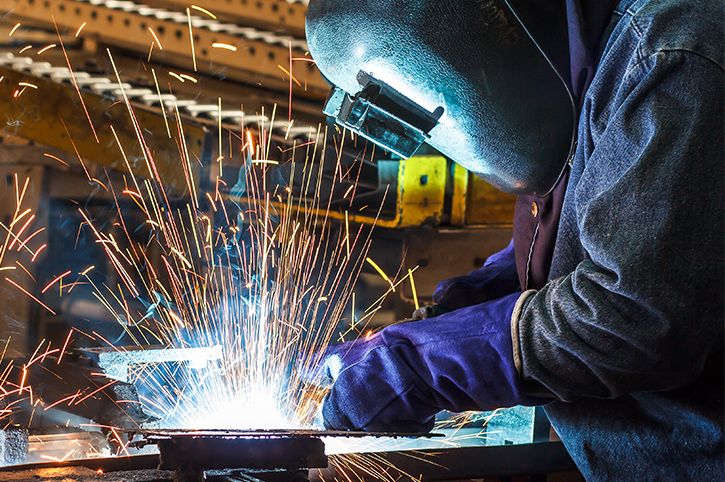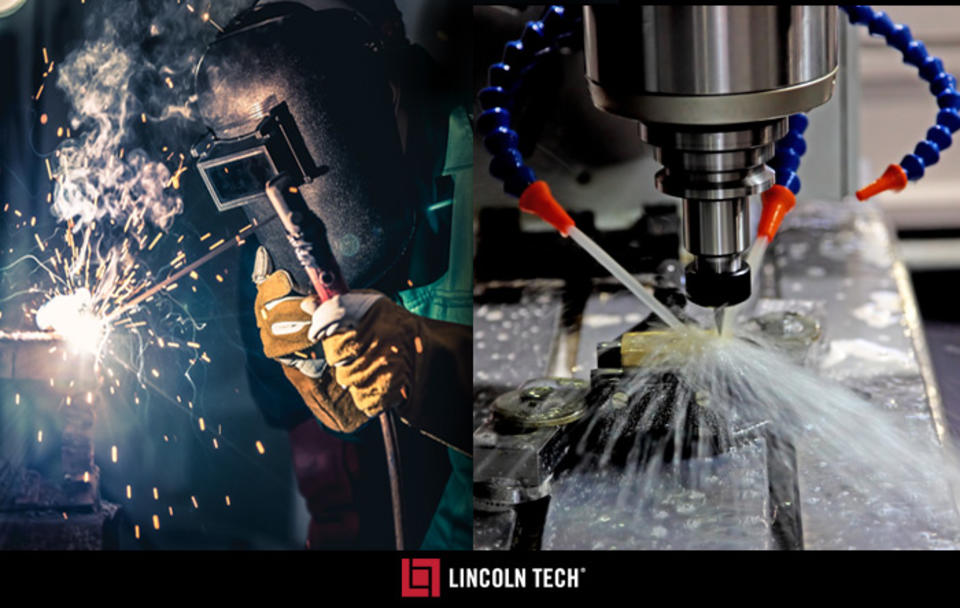Proven steps to avoid porosity in welds with Belgrade Welding
Everything about Welding: Key Insights Into Techniques and Finest Practices for Success
Welding includes a selection of strategies, each fit for certain materials and applications. Recognizing these methods, such as GMAW, SMAW, and TIG, is vital for achieving excellent results. The right equipment and security techniques can not be forgotten. As preparation and troubleshooting play critical roles in the welding procedure, mastering these elements can substantially enhance the high quality of the last product. What are the crucial factors that guarantee a successful weld?
Recognizing Various Welding Methods
Welding techniques encompass a range of methods, each suited to specific applications and materials. Among one of the most common strategies are Gas Metal Arc Welding (GMAW), Secured Steel Arc Welding (SMAW), and Tungsten Inert Gas Welding (TIG) GMAW, likewise called MIG welding, is popular for its speed and flexibility, making it excellent for slim materials. SMAW, or stick welding, is preferred for its simplicity and effectiveness in outdoor environments, specifically with thicker metals. TIG welding uses precision and control, making it appropriate for elaborate work and non-ferrous steels (Montana Mobile Welding and Repair). Each method has its distinct benefits and considerations, permitting welders to pick the very best technique based on the job's demands, material type, and desired results. Recognizing these techniques is essential for effective welding
Vital Welding Devices and Tools
While different welding strategies require particular skills, the best equipment and devices are similarly crucial for attaining quality outcomes. Important welding tools includes welding equipments, which vary relying on the method-- such as MIG, TIG, or stick welding. Protective equipment, including aprons, gloves, and helmets, guarantees safety and convenience during the process. Additionally, fixtures and clamps help protect products in position, making sure accuracy in welds. Consumables like welding poles, cable, and shielding gas are likewise vital parts that influence the quality of the weld. In addition, tools such as mills and cutters facilitate surface preparation and post-weld completing, adding to a specialist result. Investing in high-grade equipment eventually boosts the efficiency and performance of welding tasks.
Safety And Security Practices in Welding
Proper safety techniques are necessary in the welding industry to secure employees from potential hazards. Welders must put on suitable individual protective devices (PPE), including headgears with correct shading, handwear covers, and flame-resistant garments. Ample ventilation is vital to minimize direct exposure to dangerous fumes and gases created throughout the welding process. Additionally, workers should be learnt the appropriate handling of welding equipment to stop crashes. Fire precaution, such as maintaining flammable materials away from the welding area and having fire extinguishers easily available, are needed. Regular inspections of equipment and workspaces can help identify potential threats before they result in accidents. By sticking to these security methods, welders can create a more secure working atmosphere and minimize threats linked with their profession.
Preparing Products for Welding
Preparing materials for welding is a vital action that considerably influences the high quality and integrity of the end product (Montana Mobile Welding and Repair Fabrication). Appropriate prep work involves cleaning up the surface areas to get rid of pollutants such as rust, oil, and dust, which can compromise the weld. Strategies such as grinding, sanding, or utilizing solvents are typically utilized to achieve a clean surface area. Additionally, making certain that the materials mesh comfortably is vital; voids can lead to weak welds. It's additionally essential to consider the placement and positioning of the parts, as this will affect the simplicity of welding and the final result. Choosing the appropriate filler material and guaranteeing compatibility with the base metals is crucial for accomplishing strong, durable welds.
Tips for Achieving High-Quality Welds
Achieving high-quality welds calls for focus to information and adherence to finest methods throughout the welding procedure. Correct joint preparation is vital, ensuring surfaces are tidy and cost-free from pollutants. Picking the appropriate filler product and welding technique based upon the base metals is critical for excellent bonding. Preserving regular travel speed and angle while welding can advertise and avoid issues uniformity. Additionally, regulating warm input is vital; excessive warm can bring about bending and damaged joints. On a regular basis checking the welds during the process enables immediate changes if needed. Lastly, using appropriate post-weld therapies, such as cleaning and tension alleviation, can enhance the durability and integrity of the weld, eventually making sure an effective outcome.
Troubleshooting Common Welding Issues
Welding frequently offers challenges that can affect the high quality and honesty of the end product. Common problems such as porosity, irregular weld beads, and overheating can arise, each requiring particular fixing strategies. Understanding these troubles is important for welders to enhance their skills and accomplish ideal outcomes.
Porosity Problems Discussed
Porosity can usually be overlooked, it stays a critical issue in welding that can compromise the stability of a completed item. Porosity describes the visibility of small gas pockets within the weld bead, which can weaken the joint and lead to early failure. This issue generally arises from contaminants, wetness, or incorrect shielding gas insurance coverage throughout the welding procedure. To reduce porosity, welders should verify that the base products are tidy and dry, make use of appropriate protecting gases, and maintain regular welding parameters. Routinely evaluating the equipment and setting can also aid determine potential concerns before they show up in the weld. Dealing with porosity efficiently is necessary for accomplishing strong, durable welds that satisfy high quality criteria.

Inconsistent Weld Beads
Inconsistent weld beads can substantially impact the top quality and stamina of a finished product. Different factors add to this concern, including improper traveling speed, wrong amperage setups, and inconsistent electrode angles. When the welder moves as well quickly, a bead might appear narrow and do not have penetration, while relocating also gradually can trigger extreme buildup. In addition, making use of the wrong amperage can result in either damaging or excessive spatter, both of which concession weld honesty. The welder's technique, such as irregular lantern motion, can additionally bring about uneven grain look. To minimize these troubles, welders need to focus on preserving consistent, regulated activities and guaranteeing appropriate devices settings to achieve uniformity in their welds. Consistency is vital to accomplishing solid and dependable welds.
Overheating and Warping Issues
Extreme warmth throughout the welding process can lead to substantial overheating and deforming concerns, influencing the structural integrity of the workpiece. These issues often show up as distortion, which can jeopardize placement and fit-up, making additional assembly testing. Variables adding to overheating consist of the choice of welding criteria, such as voltage and travel speed, in addition to the kind of product being bonded. To reduce these concerns, welders need to maintain regular travel speed and proper heat input while checking the work surface temperature level. Additionally, pre-heating or post-weld warmth treatment can assist relieve tensions brought on by fast cooling - Belgrade Fabrication. Regular examination and adherence to ideal techniques are important in preventing getting too hot and making sure the long life and reliability of bonded frameworks
Regularly Asked Questions
What Are the Profession Opportunities in the Welding Market?
The welding industry offers varied profession chances, including positions as welders, inspectors, designers, and instructors. Experts can operate in manufacturing, construction, aerospace, and auto sectors, gaining from strong demand and affordable wages in numerous duties.
How Can I Improve My Welding Rate Without Compromising High Quality?
To enhance welding speed without compromising top quality, one need to practice effective methods, maintain tools, optimize setups, and boost hand-eye sychronisation. Normal training and looking for comments can also substantially add to attaining much faster, top notch here welds.
What Accreditations Are Available for Welders?
Various certifications exist for welders, including those from the American Welding Culture (AWS), the National Center for Building Education and Research Study (NCCER), and various industry-specific companies. These qualifications improve employability and show ability proficiency.
How Does Welding Affect the Features of Metals?
Welding affects the properties of steels by changing their microstructure, which can bring about modifications in hardness, toughness, and ductility. Warmth input and air conditioning rates throughout the procedure substantially impact these product attributes.
Can I Bonded Dissimilar Metals With Each Other?
